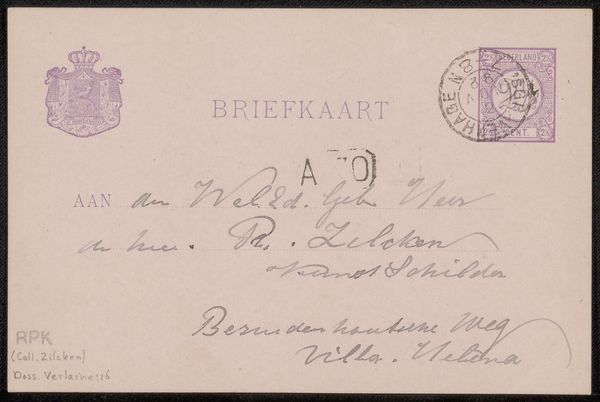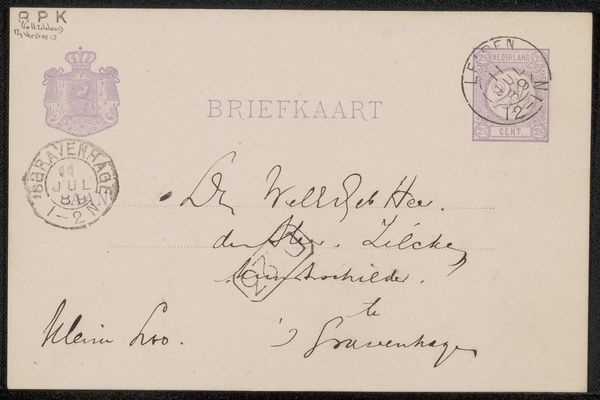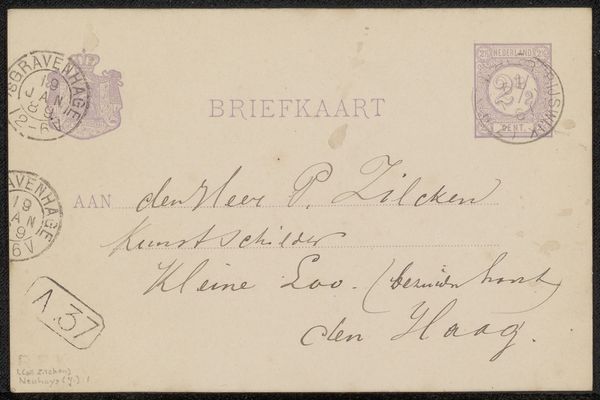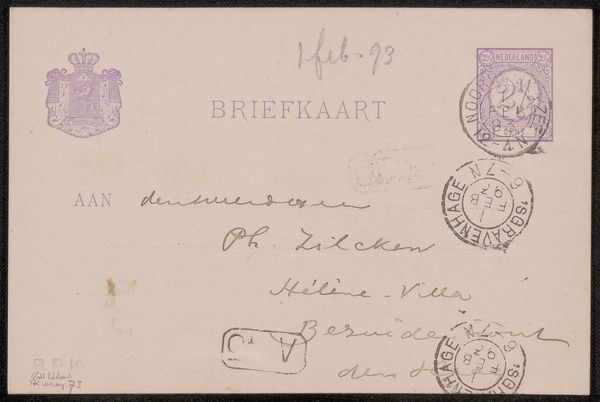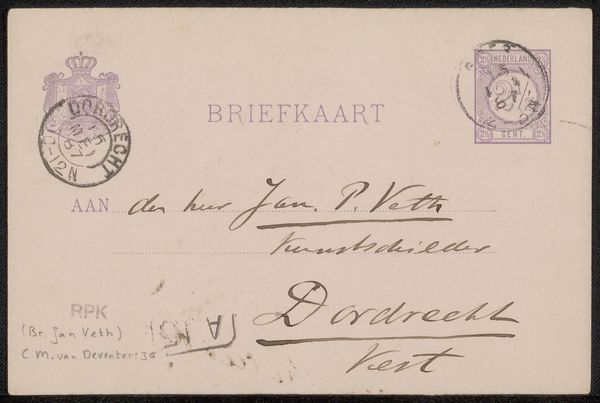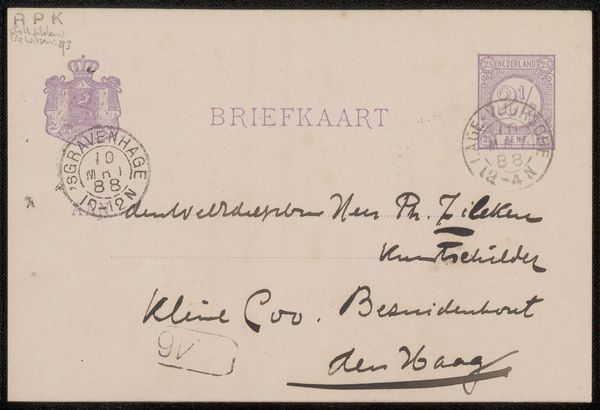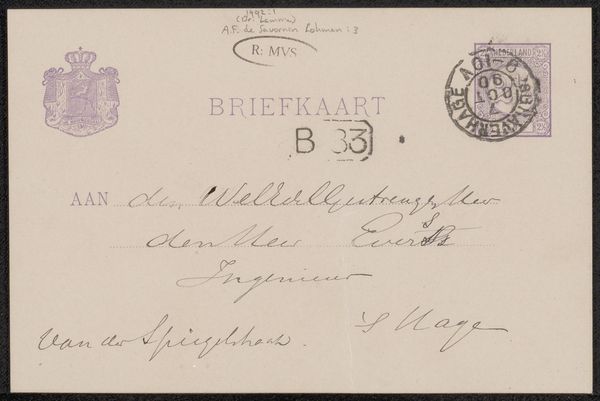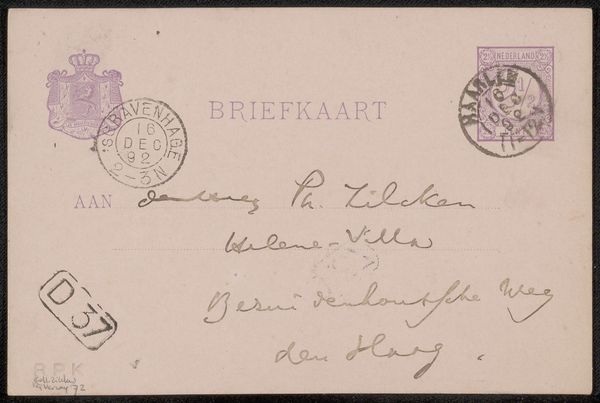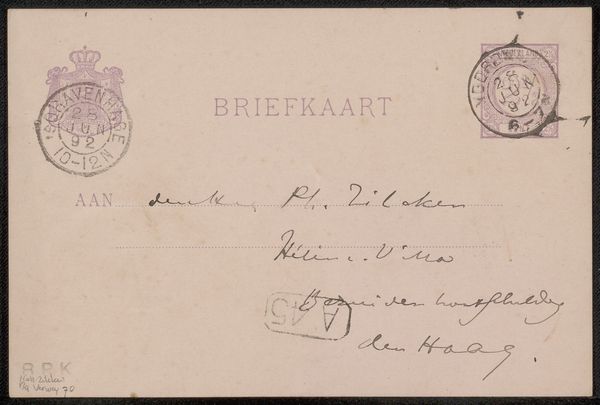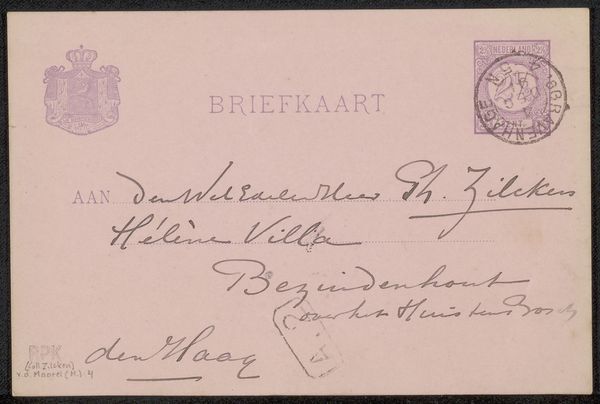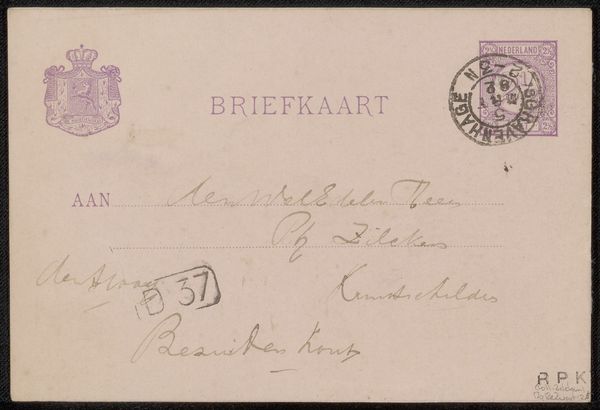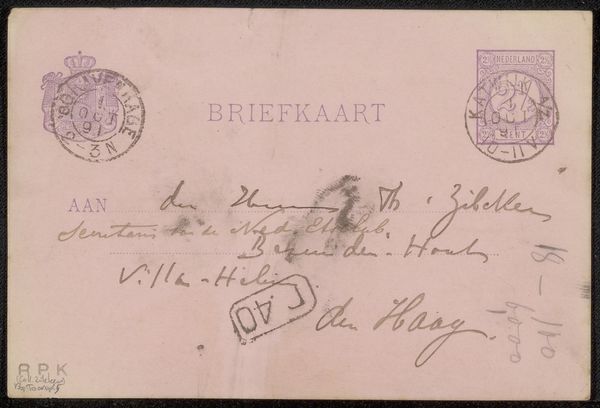
print, paper, ink
# print
#
pen sketch
#
paper
#
ink
#
pen work
#
calligraphy
Copyright: Rijks Museum: Open Domain
Editor: So, here we have a piece titled "Briefkaart aan Philip Zilcken," dating from before 1893. It's essentially a postcard, rendered in ink on paper. I find the script rather delicate, almost ghostly. What’s your take? Curator: It's fascinating how such an everyday object can offer glimpses into the social networks and cultural milieu of the time. Who was Philip Zilcken and what role did he play in the art world? That would contextualize the significance of the card and Verwey's connection to him. Editor: Good question! Let’s assume for a second that Zilcken was a relatively important critic at the time. Curator: Then this “Briefkaart”, with its seemingly simple message, becomes a document in a subtle negotiation. Consider how correspondence itself functioned – the cost of postage, the time it took, the implicit hierarchy established between sender and recipient. Even the design elements - the stamps, the official imprints - communicate ideas about nation, administration, and power. Editor: That's a side of it I wouldn't have considered. It’s like analyzing social dynamics. Is there more than meets the eye to Albert Verwey's handwriting? Curator: Indeed. Calligraphy was viewed differently then; penmanship carried social weight. Was his hand considered elegant, modern, old-fashioned? These choices reflected conscious decisions about presentation. How did artists like Verwey and Zilcken contribute to the broader discourse, and how did institutions reinforce or challenge those narratives? Editor: This has made me think about how something as simple as a postcard also serves as a social artifact that preserves a message across generations. I realize it makes more sense if I see art as an exchange between people. Curator: Exactly. Analyzing it reveals the politics of imagery in ways that looking just at paintings often obscure.
Comments
No comments
Be the first to comment and join the conversation on the ultimate creative platform.
